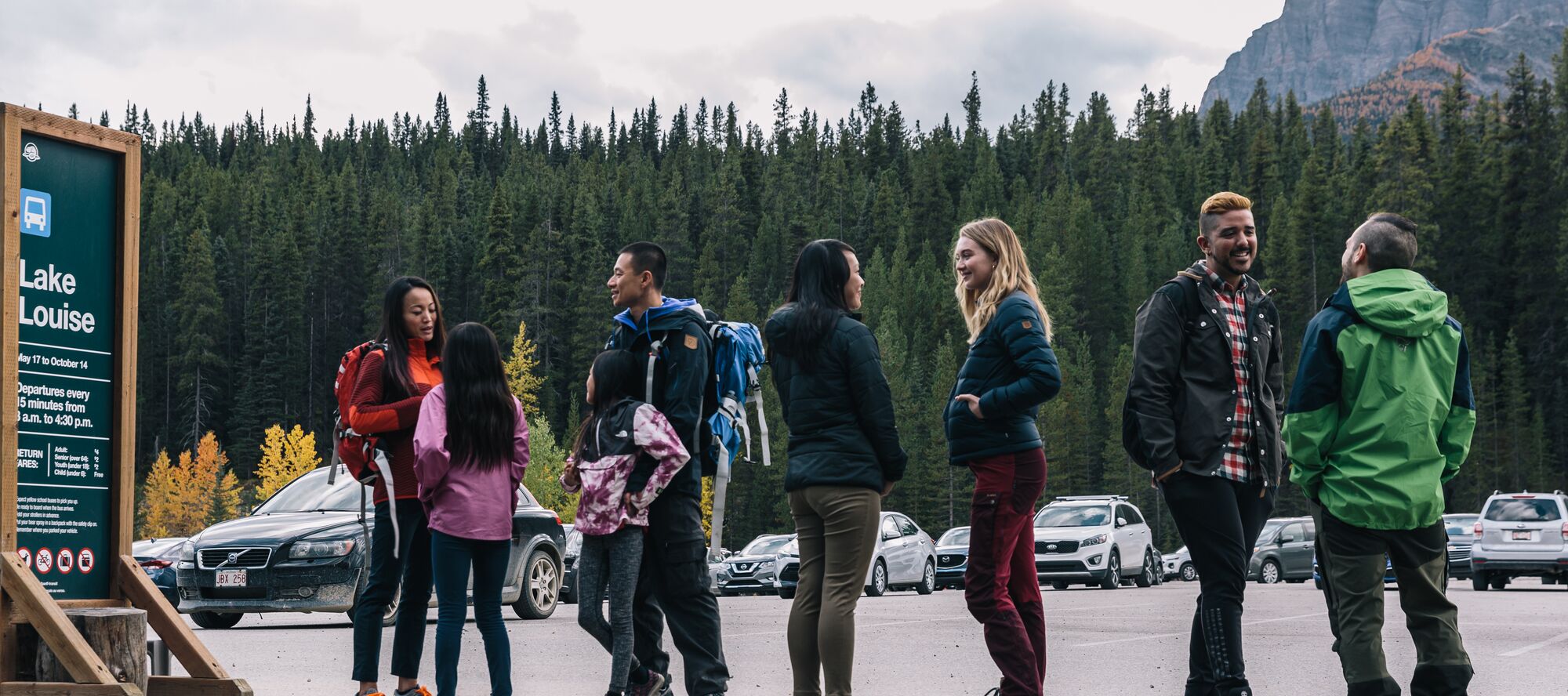
Relocation of the Lake Louise Shuttle Park and Ride Lot
What’s happening?
To improve safety and efficiency in summer 2022, Parks Canada will relocate the Lake Louise Shuttle Park and Ride from an overflow area next to the Trans-Canada Highway to an existing, underutilised parking lot at the end of Whitehorn Road at the Lake Louise Ski Area. This is a two-year pilot project that will better serve the short and mid-term transit needs of the Lake Louise area.
Parks Canada recognizes that moving the Park and Ride will increase traffic on Whitehorn Road. To protect and improve wildlife movement around Lake Louise a number of new measures will be implemented to safeguard wildlife corridors on both sides of the valley.
Why is this happening?
The access and egress for the parking lot on the Trans-Canada Highway is not designed for the volume of use it sees when used as a park and ride location. It poses both safety risks and wayfinding challenges. Moving the Park and Ride to an underutilised lot at the Lake Louise Ski Area will improve visitor experience and safety in the Lake Louise area.
What you need to know
- The decision to move the Parks Canada Park and Ride was made after careful consideration and public consultation during the Park Management Planning process for Banff National Park.
- To protect and improve wildlife movement on the east side of the valley, between the Trans-Canada Highway and the Lake Louise Ski Area, Parks Canada will:
- Restrict incoming motorists from accessing Whitehorn Drive between 8 pm and 6 am during summer months using a permanent gate. Access will be maintained for Lake Louise Ski Area staff and the gate will not impede access to the Bow Valley Parkway.
- If the Park and Ride moves permanently, Parks Canada will explore a future wildlife crossing structure on Whitehorn Road to further facilitate safe wildlife movement.
- To protect and improve wildlife movement on the west side of the valley, between the Trans-Canada Highway and the lakeshore at Lake Louise, Parks Canada will:
- Expand the existing summer trail closure on the west side of the Bow River Loop. In 2022, the closure will run from the pedestrian bridge at the Lake Louise (hard-sided) Campground to the pedestrian bridge at the Lake Louise Train Station. The trail section between the Lake Louise Tent Campground and Lake Louise Drive will remain open to permit pedestrian access to the Louise Creek Trail for lake access. The east side of the Bow River Loop will remain open.
- Close the parking lot at the Great Divide trailhead, a known hotspot for wildlife activity. The trail will remain open and parking will be available in the village of Lake Louise and at the Lake Louise lakeshore.
- Recommend pedestrians use the Louise Creek Trail rather than the Tramline Trail to reduce activity in this area. Cyclists are welcome to continue to use the Tramline trail as a safe alternative to Lake Louise Drive.
- Close other unnamed social trails between the Lake Louise village and the lake to focus human use on the Louise Creek Trail and Tramline Trail. This is intended to allow wildlife to move and forage undisturbed in adjacent areas.
- Parks Canada manages human-wildlife interactions for the safety and well-being of both people and wildlife. We are focused on protecting and conserving wildlife while enabling safe and enjoyable visitor experiences in protected places.
- Parks Canada is committed to developing long-term, sustainable transit solutions for Banff National Park based on visitor feedback. We continue to work with communities and partners to manage traffic congestion in the national park. Safety is our top priority.
Questions
Amy Krause
A/Partnering and Engagement Officer
Banff, Yoho and Kootenay national parks - Parks Canada
amy.krause@pc.gc.ca / 403-760-4500